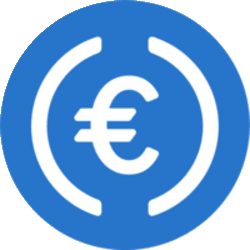- Circle executives Patrick Hansen and Dante Disparte delve into the influence of the EU’s MiCA regulation on the stablecoin industry and the wider crypto market.
- The introduction of MiCA is anticipated to stimulate growth and foster competition among EURO-pegged stablecoins.
- Hansen and Disparte highlight that MiCA’s impact will resonate beyond the borders of Europe.
Explore the transformative potential of the EU’s MiCA regulation on the stablecoin sector and the wider cryptocurrency market from the perspective of Circle executives.
Potential Impact of MiCA on the Crypto Market
Circle, known for issuing the widely-used USDC stablecoin, has captured the attention of investors amid discussions about the EU’s Markets in Crypto Assets (MiCA) regulation. As MiCA prepares to reshape the European crypto scene, Circle’s leaders have shared insights on its probable effects, forecasting notable changes in market dynamics and competition.
MiCA’s Influence on Market Structure
Patrick Hansen, Circle’s Director of Strategy and Policy, highlighted on social media the significant changes that MiCA will likely introduce. He predicts that the EU crypto sphere will become more localized, institutionalized, and consolidated. Hansen also noted that MiCA’s implementation could create a more professional and regulated landscape for cryptocurrencies in the EU, compelling market players to adhere to new standards or exit.
Stablecoin Market and Compliance
Both Hansen and Dante Disparte, Circle’s Chief Strategy Officer, expect MiCA to place substantial pressure on stablecoin providers. Hansen suggested that stablecoin offerings, whether local or international, must comply with MiCA standards or face disappearance from the EU market in the near to mid-term, as illustrated by recent actions of various exchanges.
This regulatory push is projected to enhance growth and competition among Euro-denominated stablecoins, reflecting increased demands for transparency and adherence to regulatory norms.
Challenges for Foreign Exchanges
MiCA is anticipated to impose stringent restrictions on unregulated foreign exchanges, posing challenges for their operations within the EU. This could limit cross-border cryptocurrency trade and encourage the localization of crypto services.
Hansen emphasized that MiCA’s success depends on effective implementation. He warned that prolonged regulatory gaps in major markets like the U.S. and the U.K. might amplify MiCA’s global influence, potentially setting new benchmarks for the cryptocurrency industry worldwide.
Global Repercussions
Circle executives assert that MiCA’s ramifications will be felt globally, shaping crypto regulatory policies around the world. Patrick Hansen remarked that “MiCA standards are set to shape business practices and emerging regulations internationally,” suggesting that other jurisdictions may adopt similar approaches. This underscores the necessity for harmonized regulatory frameworks among major regions.
A coordinated approach could be vital in fostering a new Internet financial system based on transparent and consistent rules, particularly given the global dominance of USDC and other dollar-denominated stablecoins.
Circle’s Strategic Moves
Alongside MiCA’s broader implications, Circle’s recent achievement of securing the first EU stablecoin license under MiCA regulations is noteworthy. Jeremy Allaire, Circle’s co-founder, celebrated this milestone, affirming that both USDC and EURC are now compliant with EU requirements. This step positions Circle at the forefront of aligning with MiCA, creating a benchmark for other stablecoin providers.
Conclusion
In conclusion, the EU’s MiCA regulation is poised to bring transformative changes to the crypto market, particularly in the stablecoin sector. Circle executives underscore that while MiCA will foster a more regulated environment within the EU, its influence is likely to extend globally, shaping future crypto regulatory frameworks. This evolution heralds a new era of compliance, transparency, and competition in the cryptocurrency realm.
